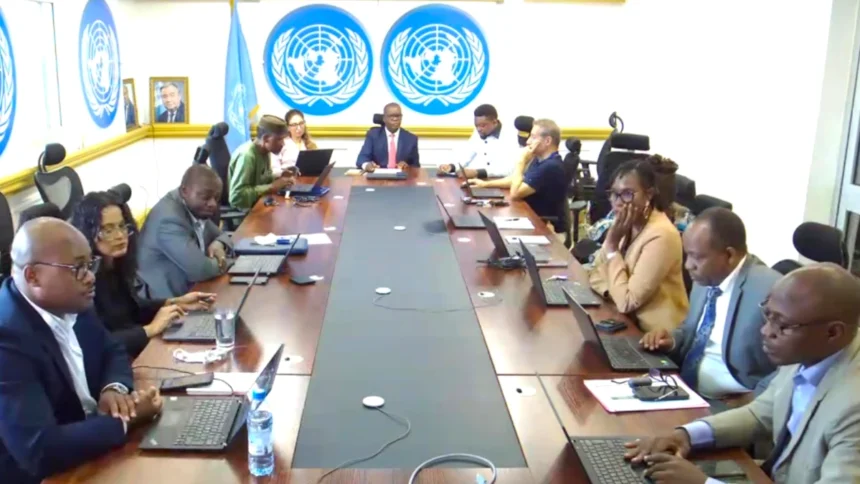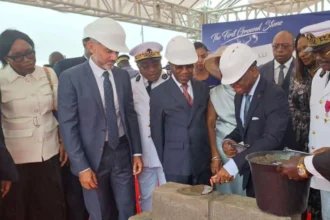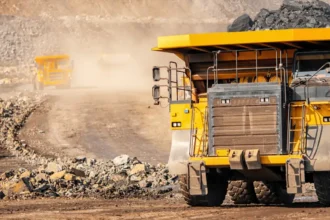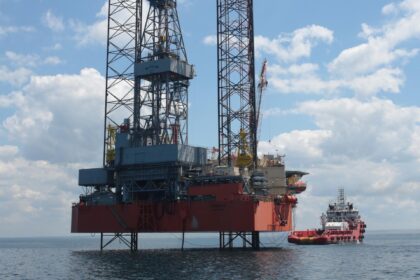Central and Eastern Africa have reaffirmed a shared vision : building economic resilience through structural transformation. That was the message from the 4th Joint Session of the Intergovernmental Committee of Senior Officials and Experts (ICSOE), held virtually under the auspices of the United Nations Economic Commission for Africa (ECA).
The high-level session brought together nearly 200 participants, including government representatives, regional economic communities, private sector leaders, academics, civil society actors, and international media. Discussions focused on identifying the strategic levers needed to foster inclusive and sustainable growth across both subregions in an increasingly uncertain global economic environment.
Strategic tools for building Africa’s resilience
The consensus was clear: investing in productive capacities and strengthening regional value chains are essential to building resilient economies. Priority sectors include timber, agro-industry, mining, and energy. Participants also emphasized the importance of fiscal and institutional resilience, digital and green skills, and empowering women and youth as key agents of transformation. Improving regional connectivity and logistics was another recurring theme. Reducing transport costs and developing infrastructure are seen as prerequisites to fully unlocking the potential of the African Continental Free Trade Area (AfCFTA) viewed as a catalyst for competitiveness and deeper integration.
An assessment of structural weaknesses
The session’s analytical reports painted a sobering picture. In 2024, economic growth reached 3.3% in Central Africa and 4.9% in Eastern Africa still below the levels required to significantly reduce poverty. Intra-African trade remains modest, standing at 2% in Central Africa and 17% in Eastern Africa, far below the promise of the AfCFTA. These structural weaknesses are compounded by global crises, climate shocks, and food insecurity. Over 470 million people were affected by food shortages across the two subregions in 2023, underscoring the urgency of reform.
Central Africa must accelerate the diversification of its trade base,
urged Charles Assamba Ongodo, Vice-President of the CEMAC Commission.
By developing regional value chains and implementing our import-substitution strategy, we can rebalance trade, strengthen food security, stabilize our currency, and reduce exposure to external shocks.
Diversification and industrialization : the way forward
Eastern Africa, despite stronger performance, still faces vulnerabilities linked to its heavy import dependence.
The backbone of economic diversification lies in energy security, food security, and human capital development,
noted Ali Houmed Aboubaker, Secretary-General at Djibouti’s State Secretariat for Investment and Private Sector Development.
He added that industrialization and regional economic complementarity are essential to building sustainable growth. Echoing this view, Adama Ekberg Coulibaly, Director of Subregional Initiatives at ECA,stressed the role of the private sector in strengthening productive capacity.
Private investment must complement public efforts. Most of our enterprises are very small, and even our largest companies do not rank among the world’s top 500. We must nurture an ecosystem where SMEs can become national champions.
Africa’s economic ecosystem
ECA officials emphasized that African economies continue to grapple with deep-seated structural challenges : low industrialization, overreliance on raw materials, limited infrastructure, and fiscal fragility. In Central Africa, for example, the budget deficit widened from 1.1% of GDP in 2023 to 1.6% in 2024, mainly due to declining oil revenues. Yet, there are signs of progress. The subregion’s growth rate rose from 3.4% in 2023 to 4.5% in 2024, driven by stronger performance in oil, agriculture, manufacturing, and services.
In Eastern Africa, growth is projected to reach 6.5% in 2025, supported by dynamic service, agriculture, and construction sectors. These trends suggest that transformation is within reach provided countries consolidate gains and invest in strategic sectors such as infrastructure, industrialization, technological innovation, special economic zones, green and blue economies.
The meeting’s conclusions call for a paradigm shift: Africa must transition from an extractive economy to a productive and value-creating economy one capable of ensuring food, energy, and industrial sovereignty. By placing productive capacity at the heart of its policy agenda, the continent is charting a new course one that prioritizes not just growth, but social equity, sustainability, and job creation.
The message from Central and Eastern Africa on October 1, 2025, was clear: resilience is not an abstract goal, but a collective commitment to build an Africa that controls its economic destiny and stands strong amid global uncertainty.














